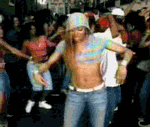 Photo by: Photo Supplied
Photo by: Photo SuppliedLogging on: Vandy Rattana hones his focus.
WHERE?
"WALKING THROUGH"
an exhibition of photography by Vandy Rattana can be seen through September at Baitong Cafe and SaSa Gallery, 7 St 360
(between Street 51 and Norodom Boulevard)
http://www.baitongcambodia.org/
The Phnom Penh Post
Monday, 31 August 2009
Lim Seng Haeng
Local fine-arts photographer Vandy Rattana hopes to harness a collective of local Khmer artists who are willing to work toward international standards.
VANDY Rattana, 29, is a successful photographer and one of the six founders of Stev Selapak, a Cambodian photographers' group created in early 2008. The group aims to promote world-class Cambodian photographers to an international audience.
(Disclosure: Vandy Rattana is a former Post staff photographer.)
Vandy Rattana has already represented Cambodian artists overseas, joining a contemporary art collective in Beijing called "The Long March", which recently invited contributors from each country on the historical Ho Chi Minh Trail for a collaborative creativity session.
Vandy Rattana says his love of photography could well be genetic because his father dedicated his whole life to art. Vandy Rattana realised his love for art at the age of six and has also been able to draw very well since childhood.
During this time, he also developed an appreciation for film, absorbing movies from Russia, Vietnam, India, China, America and Japan - but he preferred India's because of the artful compositions and framing. Indian movies also often portrayed pertinent family and social issues.
Since early 2005, Vandy Rattana has devoted his life and career to photography. His first photo exhibition, a treatise on interior spaces for a local art collective called Visual Arts Open (VAO), was titled "Looking In", which made him well-known locally.
At the end of the year, he will leave Cambodia to advance his studies in France. But before he leaves he will present his latest exhibition, "Walking Through", documenting the rubber plantations of Kompong Cham province in 2008 and 2009.
What inspired you to create this group?
I have seen that, in France or other Western countries, they create diverse groups or unions. And they really work well, so I think this group will contribute a lot to Cambodian photography.
If we have a group, our voices will be heard more widely, and we will have solidarity. We can help each other by giving advice or innovative ideas.
Logically, we can share knowledge among each other. We will screen our photos locally and, one day, when we are stronger, we can compete internationally. Khmers can be the best if they are willing.
What are the criteria to become a member?
Now we have six founding members - though more people will join soon.
We don't require much for membership, although you should be under 35 years of age, have a strong commitment and be ready to learn. You will not earn any money, but you will learn a lot about photography.
Do photographers need a lot of knowledge?
A good photographer needs to have a great deal of understanding, which requires a lot of reading and listening. Anyone can be my teacher; I listen to everyone, so I can learn from them.
Cambodians are not really socialised, and if they so socialise, they usually just meet to drink together. I mean socialising in terms of meeting someone to whom you can talk, share and learn from. You can learn from scholars - even celebrities, common folk or dumb people. Knowledge is borderless. You know this; others know that - so you have to keep learning, creating and sharpening your knowledge every day.
Recently I've started to love Japanese movies because they require a lot of critical thinking, and the endings are often unexpected. They work your brain better than simple, easily predictable movies.
So what are the main problems currently facing Cambodian photographers?
Cambodian photographers' lack of assignments - and they are not willing to work independently on their own. Some have worked for media agencies, and they can survive, for sure, but they do not gravitate towards creative work.
To be a photographer in Cambodia you have to be self-inspired and self-motivated or you will get lost because Cambodian people do not really welcome innovative ideas.
People call us crazy because we create new phenomena, regardless of whether it is art. So being a photographer is not really a ... nice profession. You need to try it first to be able to capture great things in life.
How can we improve?
We need more high-quality photography. There are still insufficient documentary photos showing the changes in our society and the culture.
Like I have done for each of my exhibitions, I need to spend a lot more time doing research and thinking topics though.
Recently, I have just photographed rubber trees, which could be my last exhibition in Cambodia. I spent an entire month observing and photographing the rubber trees in many places in Kampong Cham Province.
I slept with the local community in the rubber plantation and faced many obstacles just to get good and meaningful photographs.
You need to make an effort and to be positive about what you are doing.






0 ความคิดเห็น:
Post a Comment